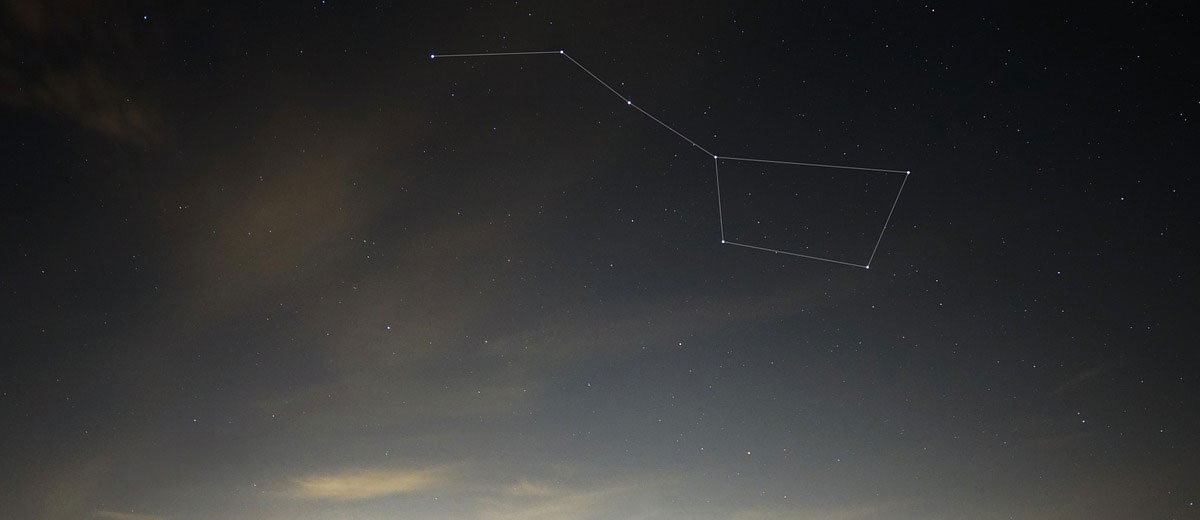The Big Dipper is probably THE most famous star pattern, period.
It’s big, bright, and serves as a guide to many other bright stars and constellations on the great road map of the sky. But don’t let its commonness deceive you. Far from a humdrum star pattern, it actually has some pretty cool stars and deep sky objects of its own.
For example, Merak and Dubhe, the two stars pointing to the North Star, can also point you to two beautiful galaxies. Bode’s Galaxy and the Cigar Galaxy, known as M81 and M82, respectively, are in the upper right corner of Ursa Major—the Big Dipper’s parent constellation. They’re too faint to be seen with the naked eye, having apparent magnitudes of 6.94 and 8.41. However, a small telescope with a lower power eyepiece can resolve them both in the same field of view.
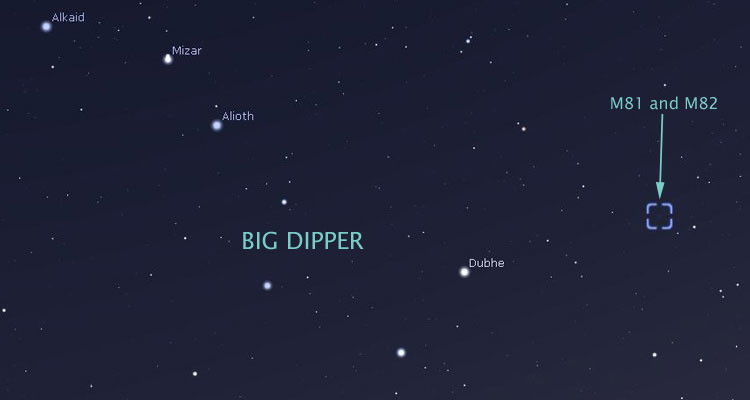
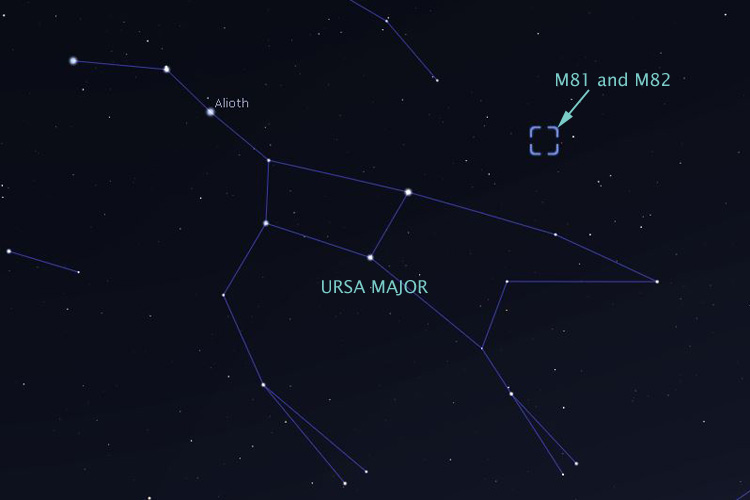
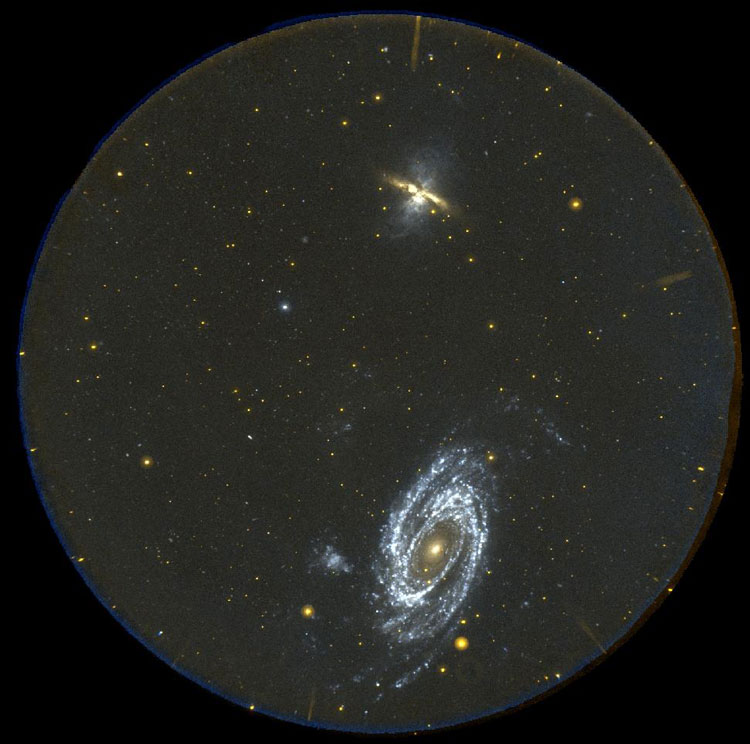
You don’t even have to use a telescope to pick out another cool feature of the Big Dipper. On a dark night, you can see that the second-last star on the Dipper’s handle is actually two stars. Alcor and Mizar, as they are called, provide a great example of a multiple star system—multiple stars orbiting a common center of mass. Mizar is the brighter of the two. Alcor is just above it, when the “bowl” of the dipper is pointing up.
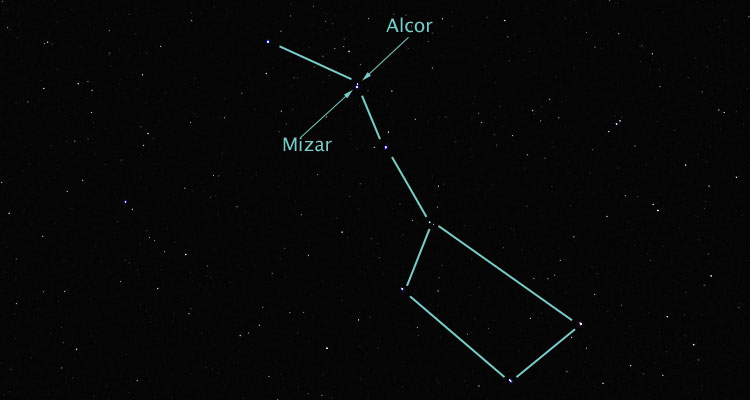
They’re easily resolved with the naked eye, and they look fantastic through a pair of binoculars. And appearances can be deceiving. What looks like 2 stars with the naked eye is actually six stars! Mizar is a quadruple star system, while Alcor is a binary system. You can see this if you point your telescope at these beauties. With even a modest scope, Mizar can be resolved into two or more points of light, depending on your magnification.
Here’s a few neat things about the Big Dipper:
–It’s an asterism, not a constellation.
–In Slavic languages, and in Romanian, it’s known as the Big Wagon, and the Germans know it as the Great Cart. In the UK, you’ll hear it being called the Plough.
–Its parent constellation, Ursa Major, is circumpolar (as seen from northern latitudes). That means it’s constantly rotating around the North Star, never setting beyond our horizon. So any night is great for observing it!
–The Big Dipper is slowly changing shape! Its stars are constantly moving. In 50,000 years, the asterism will appear slightly different from today, and it’ll be facing the opposite way.
Read more by Katharina on her page kindersleysocial.ca/webarchive/Sky-Watcher/
